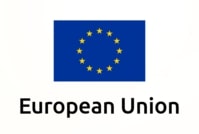San Sebastian - the capital of world gastronomy
2016 European Capital of Culture, a seashell resort and a city where the world's second University of Gastronomy Sciences was established. This is San Sebastian, situated on the Bay of Biscay, the "pearl of the north".
At the beginning of the 20th century, the Spanish royal family loved to spend their holidays in San Sebastian. Later it moved to a somewhat quieter place, as a series of terrorist attacks took place here in the last years of General Franco's rule. Today, the resort is teeming with life, and several times a year it hosts great festivals, including Tamborrada with its drums, St. Tomasz or Semana Grande with the international fireworks competition.
A huge tourist attraction of San Sebastian is one of the most famous city beaches in the whole country. This is Playa de La Concha, nestled in the picturesque bay of the same name. Surrounded by the blue waves of the Cantabrian Sea, it tempts with golden sand. Since 2007, La Concha is considered one of the twelve treasures of Spain.
A city in the shape of a shell
From the air, San Sebastian looks a bit like a shell with a pearl - its role is played by the Island of St. Clara. The beautiful islet is one of the favorite places of afternoon excursions of the locals, it is also very popular among tourists. It can be reached easily and quickly by a special boat - they run quite regularly from the local port.
It is hard to believe today, but in the past the "pearl" of San Sebastian was dreaded. In the 16th century, the plague broke out in the city and the sick were separated from the rest of the inhabitants and transported to the island.
Pintxos - just in time for a tooth
The eastern headland of the bay covers the wooded hill of Urgull. You can reach its top in more than half an hour, and after reaching the top you will see the imposing figure of Christ and the ruins of a 12th-century castle. During the walk towards the hill, we will traverse the maze of narrow streets of the old town. We will pass the baroque church of Santa Maria, the Gothic cathedral and the square where bloody bullfight took place in the past. There are also plenty of bars serving pintxos , or miniature snacks, in this part. What distinguishes them from the popular tapas is that they are served on pieces of baguette, and the whole is pierced with toothpicks.
While wandering along the seaside boulevard, you can breathe not only the fresh breeze, but also the aromas of the dishes served in the local pubs. Among the colorful low-rise fishermen's houses hide places where you can enjoy delicious seafood and freshly caught fish dishes. Only a well-fed person can walk here calmly - others will not be able to focus on admiring the advantages of the coast.
The capital of world gastronomy
While we're on the subject of cooking, it is worth mentioning that San Sebastian is considered the unofficial capital of world gastronomy. It is the second European city, next to Paris, in which there are three restaurants distinguished by the highest Michelin awards, i.e. three stars. Throughout the city, we can find as many as fourteen stars of the guide.
The first gastronomy and culinary arts students in Spain are educated at the resort - the second largest University of Gastronomy Sciences in the world operates here. One of the teachers is Ferran Adrià, the chef of "El Bulli", 5 times recognized as the best restaurant in the world.
Where to stay
On the outskirts of San Sebastian you will find the lovely Camping Igueldo . You can stop by a motorhome. For a parking space and accommodation for 2 people, we will pay from 8.20 to 19.90 EUR / day, while access to electricity costs 4.90 EUR. The campsite has a supermarket, restaurant and even a post office and car wash. It is adapted to the needs of disabled people.
In this resort, everyone will find something for themselves, both lovers of great cuisine and fans of festivals. For many years, San Sebastian has been one of the main tourist attractions in Spain, and it is visited by over 400,000 people each year.
A writer by profession, a passion of a cat. One day he will see what is behind the Urals - good to Vladivostok. So far, when he can, he enjoys the sun of the countries of southern Europe. And it's also fun;)
